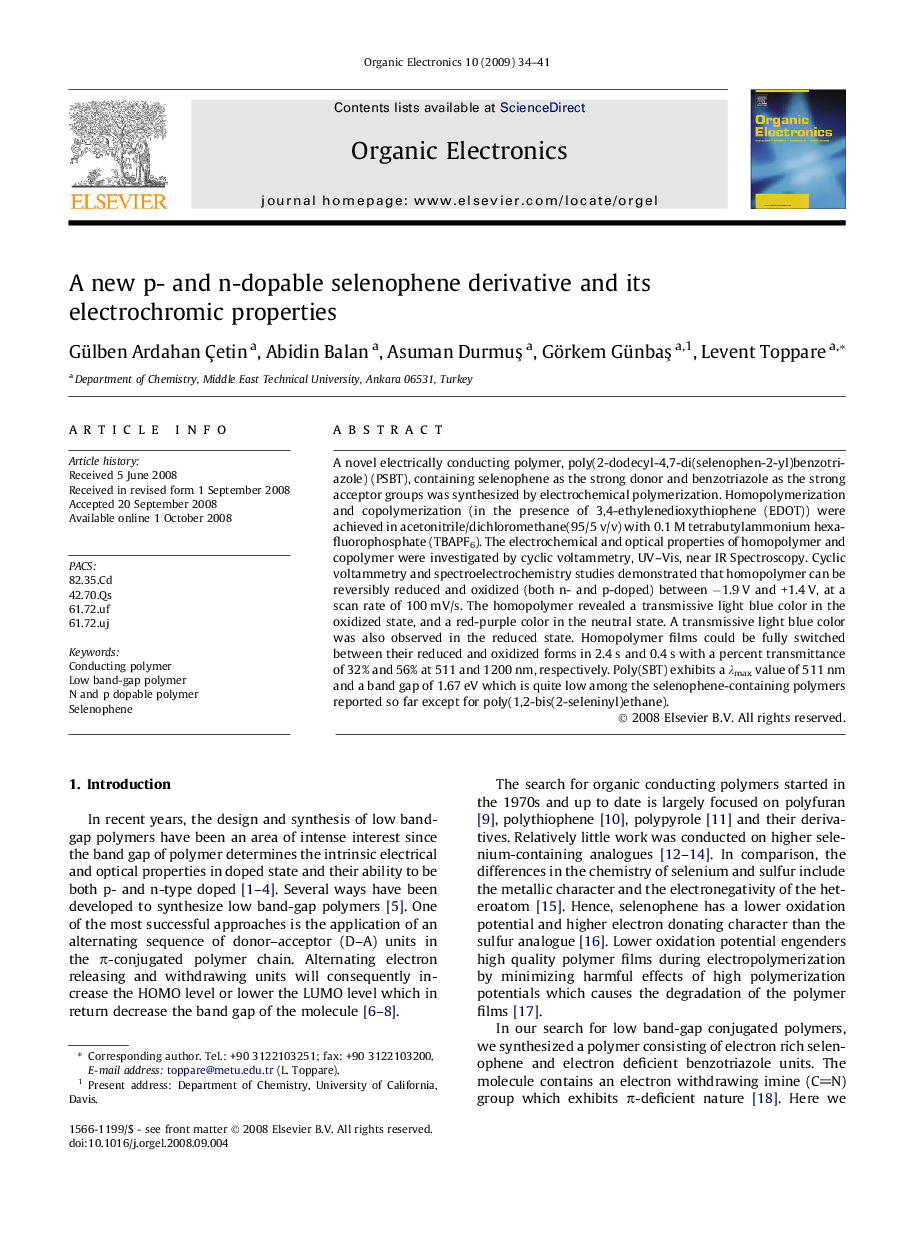| کد مقاله | کد نشریه | سال انتشار | مقاله انگلیسی | نسخه تمام متن |
|---|---|---|---|---|
| 1268265 | 972399 | 2009 | 8 صفحه PDF | دانلود رایگان |

A novel electrically conducting polymer, poly(2-dodecyl-4,7-di(selenophen-2-yl)benzotriazole) (PSBT), containing selenophene as the strong donor and benzotriazole as the strong acceptor groups was synthesized by electrochemical polymerization. Homopolymerization and copolymerization (in the presence of 3,4-ethylenedioxythiophene (EDOT)) were achieved in acetonitrile/dichloromethane(95/5 v/v) with 0.1 M tetrabutylammonium hexafluorophosphate (TBAPF6). The electrochemical and optical properties of homopolymer and copolymer were investigated by cyclic voltammetry, UV–Vis, near IR Spectroscopy. Cyclic voltammetry and spectroelectrochemistry studies demonstrated that homopolymer can be reversibly reduced and oxidized (both n- and p-doped) between −1.9 V and +1.4 V, at a scan rate of 100 mV/s. The homopolymer revealed a transmissive light blue color in the oxidized state, and a red-purple color in the neutral state. A transmissive light blue color was also observed in the reduced state. Homopolymer films could be fully switched between their reduced and oxidized forms in 2.4 s and 0.4 s with a percent transmittance of 32% and 56% at 511 and 1200 nm, respectively. Poly(SBT) exhibits a λmax value of 511 nm and a band gap of 1.67 eV which is quite low among the selenophene-containing polymers reported so far except for poly(1,2-bis(2-seleninyl)ethane).
Journal: Organic Electronics - Volume 10, Issue 1, February 2009, Pages 34–41